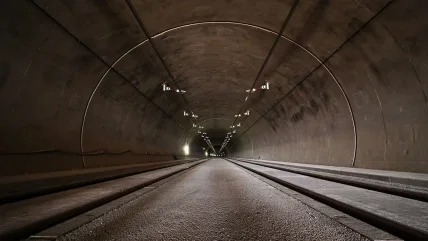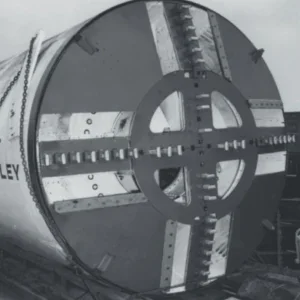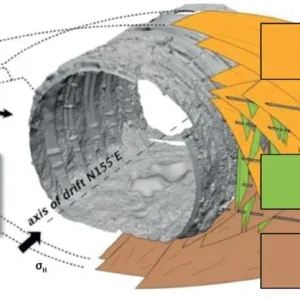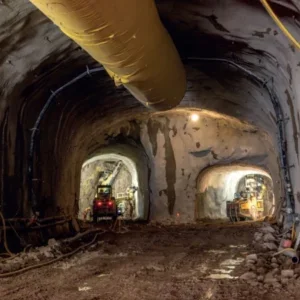
Over the past 10-15 years, the tunnelling industry has been delivering major new-build projects such as Crossrail, Tideway, HS2 and others, as well as planning future projects, for example, the Lower Thames Crossing. In parallel, we see how clients and operators must effectively manage the ever-growing infrastructure asset legacy.
New technology is enabling proactive maintenance to be undertaken remotely, safely and efficiently, as well as allowing monitoring in real time. We need to embrace the practices of adjacent industries in the adoption of survey, inspection, monitoring, prediction and controls systems that allow us to manage tunnel assets safely, remotely and continuously.
Planning to operate assets over a 100-year life is not somebody else’s problem. Increasingly, it is mandatory for prebuild requirements to demonstrate that infrastructure is not just fit for the intended foreseeable purpose (i.e. serviceability and durability), meets capacity requirements, and can be efficiently maintained. It will also become necessary for owners to consider adaptability, resilience and possible evolving needs (crystal ball-gazing comes to mind).
Mark Wild, CEO of Crossrail, forecasts that Crossrail 1 will last for 300 years (The Economist, August 2021). Perhaps the holes in the ground may last that long, but will they be used for rail transport in the 24th century? Maybe it will evolve into a spatial conduit for ‘Crossrail version 5’ ? More likely, it could be a linear urban farm, a longitudinal data-storage tube for Google, or an Amazon ‘quick delivery’ cargo module transit under Oxford Street in Central London.
The point is that in addition to the new build, our owners and operators will have to continuously manage the legacy infrastructure that we have (e.g. 100-yearold plus London Underground tunnels; the 30-year-old Jubilee Line Extension, 100-year-old Rotherhithe and Blackwall Road Tunnels, and the 30-year-old Channel Tunnel, to name a few). That means ensuring that the existing footprint can be adapted to changes in capacity, new management technology and possibly even repurposing its use. In addition, there will be demand for more convincing evidence that new infrastructure build is necessary and that it fulfils the prevailing societal requirements, i.e. being resilient to climate change, is low- or zero-carbon, offers convincing value measured across a wide spectrum of indicators and is affordable in construction and operation.
NEW INITIATIVE
I gave a presentation at the BTS 2020+1 Conference in London in late September 2021. My chosen theme was as above and coincides with my recent appointment as Chair of a new CIRIA (Construction Industry Research and Information Association) steering board tasked with producing guidance for industry on the management of tunnel assets (old, new and future), and to produce standard procedures so that common practices can be embraced by a wide range of stakeholders, including owners, operators, legislators, funders, insurers, government agencies, consultants, contractors and supply chain providers. It will share best practices from UK and international sources and will include recent developments in tunnel linings, materials science, data management, observation, control and prediction. In parallel, and most importantly, it will need to recognise contemporary demands regarding sustainable practices with respect to resilience, new legislation security, safety, value, net zero and the rising influence of climate change. The aim is to produce a trusted practical template to assist the technical and commercial process when planning for the management of tunnel assets.
It will be quite a challenge to achieve consensus of:
a) Key influences and impacts
b) A common agreement of the priorities
c) The format and content of the Guideline (and importantly, produce a concise, easily-read document that will meet the requirements of a wide stakeholder base).
The CIRIA Guidance Manager is Chris Pressdee, and the CIRIA Contractor preparing the guideline is Mott MacDonald, led by Leo McKibbins. The aim is to publish the guideline by early 2023.
It is proposed that a standalone supporting guide is produced which complements the existing C671 document ‘Tunnels: inspection, assessment and maintenance 2009’.
Key areas for development include:
? Tunnel asset management – development and use of tunnel asset information systems, smart monitoring and predictive maintenance.
? Tunnel renovation and renewals – technological advances in re-lining, advances in materials and techniques for mitigation and remediation of tunnels, and tunnel structure failure prediction.
? Condition appraisal – automation of tunnel inspections and data capture systems, development of technology and computer vision for data-driven condition appraisal, and smart survey visualisation and assessment systems .
? Case studies – update to include new major projects and upgrade programmes. It is important that the new guide reflects these current industry advances, particularly with reference to developed technological innovation and current tunnel-asset owner requirements. This authoritative guidance will enable asset owners to have a trusted practical guide that can support technical and commercial decision-making, especially upon increasing tunnel asset stocks and aging underground infrastructure.
It is important that the new guide reflects current industry advances, particularly with reference to developed technological innovation and current tunnel-asset owner requirements. Development of an authoritative document by industry that provides guidance on new approaches and technology will save costs relating to inspection and maintenance of tunnels. Ultimately, this leads to improved health and safety practices by minimising time spent by individuals in tunnels and improved decision-making for when repair or renewals should be carried out.
Other advances in health and safety include real-time monitoring of environmental conditions such as air quality. This will encourage a movement towards predictive maintenance regimes and more proactive planning that maximises the availability of the asset for the benefit of users. Changes in current working practices should be implemented across tunnel asset management programmes that build off CIRIA’s current C671 guide, and move the industry forward together with updated recommendations and an agreed route map for future needs.
LESSONS LEARNT
The new guideline seeks to inform a wider range of stakeholders who suffer the consequences when the failure of tunnel infrastructure results in transport delays, disrupted energy supplies, the taps run dry and the drains are blocked. The much-publicised failure of foresight and process regarding refurbishment, and the subsequent Grenfell Tower fire disaster demonstrate that foresight and managing assets go hand in hand.
A growing number of conferences incorporate the themes of asset management that reflect our attitude regarding sustainable practices, value for money maintenance, and carbon reduction. The Institute for Manufacturing published a report this year citing evidence that vital 150-year-old London Underground infrastructure needed proactive asset maintenance regimes – including in-service refurbishment and repairs – which are essential to maintain its value and importance to the economy of London.
ISO 55000 requires that thorough life management of physical assets is essential to realise the value of responsible asset management. And the CMA (Competition and Markets Authority) recently published a new code requiring construction, transportation and utility companies to add more substance to their claims that they are fulfilling their obligations to instigate more sustainable practices (‘no window dressing’).
The tunnelling industry wants to play its part to fulfil these contemporary expectations and CIRIA will seek industry and external views and contributions during the preparation of the new guideline. CIRIA will also refer to international best practice and bring lessons learnt from adjacent industries that have more experience in advanced solutions to asset management.







